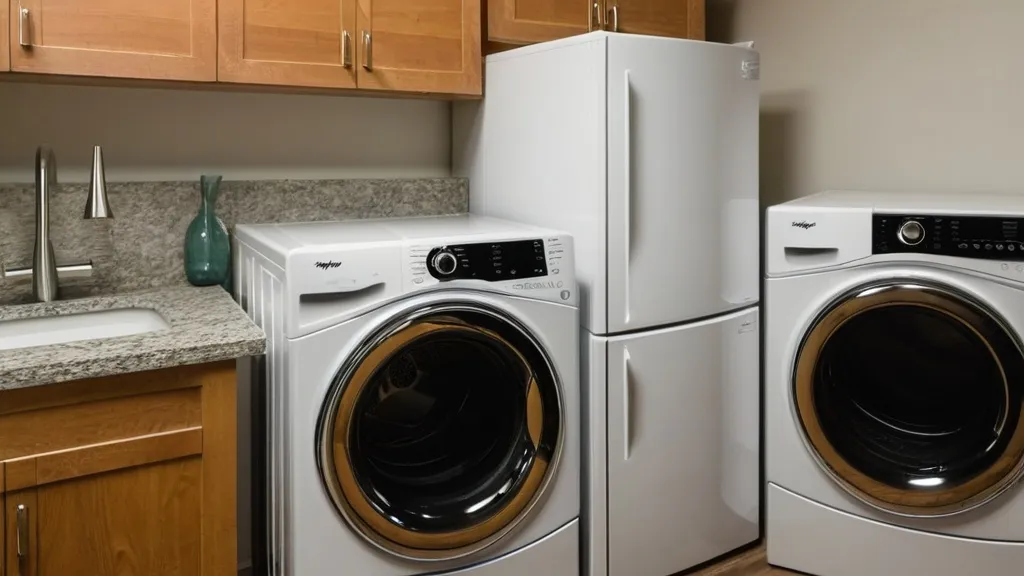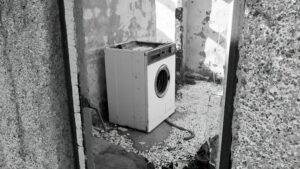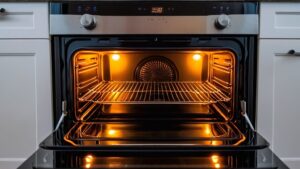
Unplugging and disabling appliances refers to the practice of physically disconnecting appliances from their power source when they are not in use. This can be done by either unplugging the appliance from the wall socket or by using a power strip with an on/off switch to cut off power supply. This practice is important for both energy conservation and safety reasons.
Table of Contents
- Key Takeaways
- Benefits of Unplugging and Disabling Appliances
- How to Unplug and Disable Appliances Safely
- Common Appliances that Should be Unplugged and Disabled
- Energy Conservation through Unplugging and Disabling Appliances
- The Environmental Impact of Unplugging and Disabling Appliances
- The Cost Savings of Unplugging and Disabling Appliances
- The Importance of Regularly Unplugging and Disabling Appliances
- The Risks of Not Unplugging and Disabling Appliances
- Making Unplugging and Disabling Appliances a Habit
- How Can I Safely Disable Appliances Without Damaging Them?
- FAQs
- What does it mean to unplug and disable appliances?
- Why should I unplug and disable appliances?
- Which appliances should I unplug and disable?
- How do I unplug and disable appliances?
- Is it safe to unplug and disable appliances?
- What are the benefits of unplugging and disabling appliances?
When appliances are left plugged in, they continue to draw small amounts of electricity even when they are turned off. This is known as standby power or vampire power. By unplugging appliances when they are not in use, you can reduce your energy consumption and lower your electricity bills. Additionally, unplugging and disabling appliances can help prevent electrical fires and increase overall safety in your home.
Key Takeaways
- Unplugging and disabling appliances can save energy and money.
- Common appliances that should be unplugged and disabled include TVs, computers, and chargers.
- It is important to unplug and disable appliances safely to avoid electrical hazards.
- Regularly unplugging and disabling appliances can reduce environmental impact and increase cost savings.
- Not unplugging and disabling appliances can lead to increased energy consumption and potential safety risks.
Benefits of Unplugging and Disabling Appliances
There are several benefits to unplugging and disabling appliances when they are not in use. Firstly, it can significantly reduce energy consumption and lower electricity bills. Many appliances continue to draw power even when they are turned off, which can account for a significant portion of your energy usage. By unplugging them, you can eliminate this standby power consumption and save money on your monthly bills.
Secondly, unplugging and disabling appliances can increase safety and prevent electrical fires. When appliances are left plugged in, there is always a risk of electrical malfunctions or short circuits that can lead to fires. By disconnecting them from the power source, you eliminate this risk and create a safer environment in your home.
Lastly, unplugging and disabling appliances can help extend their lifespan. When appliances are constantly plugged in, they are exposed to small power surges and fluctuations that can damage their internal components over time. By unplugging them when not in use, you reduce the wear and tear on the appliance and increase its overall lifespan.
How to Unplug and Disable Appliances Safely
Unplugging and disabling appliances is a simple process that can be done safely by following a few steps. Here is a step-by-step guide to help you:
1. Identify the appliances that need to be unplugged and disabled. This can include items such as televisions, computers, gaming consoles, kitchen appliances, and chargers.
2. Locate the power cord of the appliance and follow it to the wall socket or power strip.
3. If the appliance is plugged directly into a wall socket, simply unplug it by gently pulling on the cord.
4. If the appliance is plugged into a power strip, locate the on/off switch on the power strip and turn it off. This will cut off power supply to all appliances connected to the power strip.
5. Once the appliance is unplugged or disabled, ensure that the power cord is neatly coiled and stored in a safe place.
It is important to note that some appliances may have specific instructions for unplugging or disabling. Always refer to the manufacturer’s guidelines and follow them accordingly. If you are unsure about how to safely unplug or disable an appliance, it is recommended to seek professional help.
Common Appliances that Should be Unplugged and Disabled
While it is beneficial to unplug and disable all appliances when not in use, there are certain appliances that are particularly important to disconnect from the power source. These include:
1. Televisions: Televisions consume a significant amount of energy even when they are turned off. By unplugging them, you can save energy and reduce your electricity bills.
2. Computers: Computers and laptops also draw standby power when they are not in use. Unplugging them can help conserve energy and extend their lifespan.
3. Kitchen Appliances: Appliances such as microwaves, coffee makers, and toasters should be unplugged when not in use. These appliances often have clocks or timers that continue to draw power even when they are turned off.
4. Chargers: Chargers for devices such as smartphones, tablets, and laptops should be unplugged when not in use. Even when they are not connected to a device, they continue to draw power.
5. Gaming Consoles: Gaming consoles consume a significant amount of energy, even when they are in standby mode. Unplugging them can help reduce energy consumption and lower electricity bills.
Energy Conservation through Unplugging and Disabling Appliances
Unplugging and disabling appliances is an effective way to conserve energy and reduce your overall energy consumption. When appliances are left plugged in, they continue to draw small amounts of electricity, known as standby power or vampire power. This standby power consumption can account for up to 10% of your total energy usage.
By unplugging appliances when they are not in use, you can eliminate this standby power consumption and save energy. According to the U.S. Department of Energy, the average household can save up to $100 per year by simply unplugging appliances when they are not in use.
In addition to saving money on your electricity bills, reducing energy consumption through unplugging and disabling appliances also has a positive impact on the environment.
The Environmental Impact of Unplugging and Disabling Appliances
Reducing energy consumption through unplugging and disabling appliances has several environmental benefits. One of the main environmental benefits is the reduction of greenhouse gas emissions. The generation of electricity often relies on fossil fuels such as coal or natural gas, which release carbon dioxide and other greenhouse gases into the atmosphere when burned.
By reducing energy consumption, we can reduce the demand for electricity and subsequently reduce the amount of greenhouse gases emitted during electricity generation. According to the U.S. Environmental Protection Agency (EPA), every kilowatt-hour of electricity saved reduces greenhouse gas emissions by an average of 1.5 pounds.
In addition to reducing greenhouse gas emissions, unplugging and disabling appliances also helps conserve natural resources. The generation of electricity requires the extraction and burning of fossil fuels, which are finite resources. By reducing energy consumption, we can reduce the demand for these resources and help preserve them for future generations.
The Cost Savings of Unplugging and Disabling Appliances
Unplugging and disabling appliances can lead to significant cost savings on your electricity bills. As mentioned earlier, many appliances continue to draw power even when they are turned off, resulting in standby power consumption. By unplugging these appliances, you can eliminate this standby power consumption and reduce your overall energy usage.
The amount of money saved will vary depending on the number and type of appliances you unplug, as well as your overall energy consumption. However, according to the U.S. Department of Energy, the average household can save up to $100 per year by simply unplugging appliances when they are not in use.
These cost savings can add up over time and provide extra money that can be used for other purposes. By making a habit of unplugging and disabling appliances, you can effectively reduce your electricity bills and keep more money in your pocket.
The Importance of Regularly Unplugging and Disabling Appliances
It is important to make unplugging and disabling appliances a regular part of your routine for several reasons. Firstly, it ensures that you are consistently saving energy and reducing your overall energy consumption. By making it a habit, you can maximize the cost savings and environmental benefits associated with this practice.
Secondly, regularly unplugging and disabling appliances helps prevent accidents and ensure safety in your home. Electrical malfunctions or short circuits can occur at any time, even when an appliance is turned off. By disconnecting appliances from the power source when not in use, you eliminate the risk of these accidents happening.
Lastly, making unplugging and disabling appliances a regular habit helps extend the lifespan of your appliances. Constantly being plugged in exposes appliances to small power surges and fluctuations that can damage their internal components over time. By unplugging them when not in use, you reduce the wear and tear on the appliance and increase its overall lifespan.
The Risks of Not Unplugging and Disabling Appliances
Not unplugging and disabling appliances can pose several risks, both in terms of safety and energy consumption. Leaving appliances plugged in when they are not in use can lead to electrical malfunctions or short circuits, which can result in electrical fires. According to the National Fire Protection Association (NFPA), electrical failures or malfunctions were the second leading cause of home fires in the United States between 2014 and 2018.
Additionally, appliances that are constantly plugged in continue to draw standby power, which contributes to unnecessary energy consumption. This not only increases your electricity bills but also puts a strain on the environment by increasing greenhouse gas emissions.
By not unplugging and disabling appliances, you are also increasing the risk of accidents such as tripping over cords or accidentally knocking over an appliance. These accidents can result in injuries or damage to the appliance itself.
Making Unplugging and Disabling Appliances a Habit
In conclusion, unplugging and disabling appliances when they are not in use is a simple yet effective practice that can have numerous benefits. By unplugging appliances, you can reduce energy consumption, lower your electricity bills, increase safety, extend the lifespan of your appliances, and benefit the environment.
It is important to make this practice a habit by incorporating it into your daily routine. By following a step-by-step guide for safely unplugging and disabling appliances, you can ensure that you are doing it correctly. Additionally, it is important to regularly unplug and disable appliances to maximize the benefits and prevent accidents.
By making unplugging and disabling appliances a regular part of your routine, you can contribute to energy conservation, reduce your carbon footprint, and save money on your electricity bills. So, start unplugging and disabling appliances today and make a positive impact on both your wallet and the environment.
How Can I Safely Disable Appliances Without Damaging Them?
When it comes to safely disabling appliances without damaging them, the role of circuit breaker is crucial. Before performing any maintenance or repairs, always ensure the circuit breaker for the specific appliance is switched off to prevent electric shock or damage to the appliance.
FAQs
What does it mean to unplug and disable appliances?
Unplugging and disabling appliances means to disconnect them from their power source and render them inoperable.
Why should I unplug and disable appliances?
Unplugging and disabling appliances can help save energy, prevent electrical fires, and protect against electrical shock.
Which appliances should I unplug and disable?
Appliances that are not in use or are rarely used should be unplugged and disabled. This includes items such as toasters, coffee makers, and lamps.
How do I unplug and disable appliances?
To unplug an appliance, simply disconnect it from its power source. To disable an appliance, you may need to remove a fuse or circuit breaker, or use a special device designed for that purpose.
Is it safe to unplug and disable appliances?
Yes, it is safe to unplug and disable appliances as long as you follow proper safety procedures and use the correct tools and equipment. Always ensure that you turn off the power supply to the appliance at the circuit breaker before you begin working on it. Furthermore, wearing appropriate safety gear, such as gloves and goggles, will help protect you during the repair process. Remember, unplugging appliances for safe repair is an essential step in preventing electrical hazards and ensuring a smooth, efficient maintenance experience.
What are the benefits of unplugging and disabling appliances?
Unplugging and disabling appliances can help reduce energy consumption, lower your electricity bill, and improve safety in your home or workplace.



